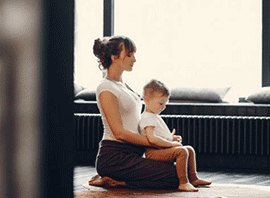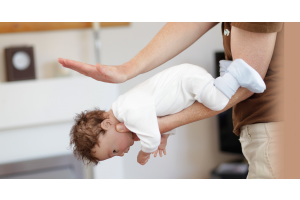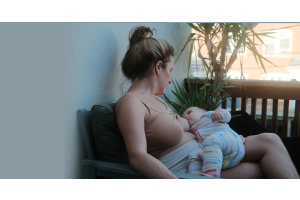Each of your birth experiences is special and unique. You can never know if this one’s going to be a quick pain or a long-hours exhausting labour experience. However, it’s always helpful to know the different stages of labour to prepare ahead for what is expected.
Childbirth happens in 3 phases: Labour, Delivery of your baby, and Delivery of the placenta. Labour is then broken down into 3 stages according to the level of your cervix dilation: Early labour, Active labour, and Transitional labour.
Stage 1: Early Labour
Early labour is usually the longest out of all 3 stages, it can span from several hours and up to several weeks without any noticeable patterned contractions. You will probably stay at home most of the time throughout this stage. Try to keep yourself occupied with your usual routines, and stay relaxed.
Key Points to Expect:
- Duration: 8 - 12 hours, or up to several weeks
- Cervix Dilation: 0 to 3 cm
- Contractions: Mild, irregular contractions that can progress to be stronger and more frequent
Other Symptoms:
- Menstrual-like cramps
- Back pain
- Pressure in your lower abdomen
- Bloody mucus discharge
- Your water might break (also known as Amniotic Sac Rupture)
What can you do when your early labour starts?
Relax.
You can feel uncomfortable with irregular contractions and belly cramps. You may feel anxious, excited, or nervous about welcoming your baby and contemplating when it’s time for the hospital. But if you read on, you’ll know that you need to save energy for the later stages, and the best thing you can do now is relax.
Some Tips to Keep You Relaxed and Comfy
- When you are feeling anxious or nervous:
Daytime: Distract yourself by focusing on light activities, including chores, cooking some dishes, taking a walk, packing your things, or listen to music.
Nighttime: Try to get some sleep! If you’re unable to sleep tight, drink a glass of warm milk, listen to soothing piano music, or aromatize the bedroom with a few drops of lavender oil.
- When you are hungry: Eat a light, energizing snack to enlighten yourself and your tummy.
Food Choices: Banana and peanut butter, yogurt with fresh fruit, mixed nuts and dried fruits, whole grain cereal, Avocado on toast, Eggs with crackers, Apple and cheese, Whole wheat bagel and almond butter, and more!
NOTICE: Try to avoid fatty food and don’t overeat.
Beverage Choices: WATER (Stay hydrated!), Mixed berry smoothie, decaffeinated teas like rooibos or peppermint tea, warm milk. NOTE: Don’t drink anything acidic like orange juice but drink lots of water!
Stage 2: Active Labour
Active labour usually lasts from 2 to 3.5 hours when your cervix dilates to 7 cm. You should be on your way to the hospital or birth center and contact your practitioner if you haven’t already when active labour starts.
Key Points to Expect:
- Duration: 2 - 3.5 hours
- Cervix Dilation: 4 - 7 cm
- Contractions: Contractions last about 45 - 60 seconds every 3 - 5 minutes; It will become stronger and more frequent.
Other Symptoms
- Increasing back pain and belly discomfort
- Leg heaviness
- Fatigue
- Increased secretion of bloody mucus
- Your water will break if not already: Your amniotic sac should have ruptured by now or ruptured artificially if not already.
What can you do when active labour starts?
1. Don’t hesitate to ask for help. As your contractions become powerful and overwhelming, you can start losing focus and give in to your rising level of anxiety. Excessive anxiety can trigger the “Fight-or-Flight” response that in turns may amplify your sensitivity to pain stimulus and make the pain more intense. You would be needing your birth coach or partner’s help for it’ll be difficult to relax by yourself at this stage. Try asking them to:
- Massage your back, lower abdomen and provide hot/cold compresses
- Gather your prop pillows, water, or anything you need
- Distract you with enlightenments: Music, games, food
- Help you change your positions or soak into the bath
- Walk around in the room with you
- Offer verbal reassurance and support
- Keep track of your contraction periods
2. Start your breathing exercises with your doula: You should start practicing your breathing techniques with your nurse or doula soon. Remember to try out different ways to find the one that best suits you and relieves your pain.
3. Keep moving, snacking, and stay hydrated! Eating and drinking some relaxing foods like nuts, oatmeal, banana, milk, chamomile, or yogurt to help melt away your stress. Stay hydrated and keep your movement to distract and redistribute the pain!
Stage 3: Transitional Labour
Transitional labour, stage 3 of the labour process, is the most intensive stage as your cervix dilates to 10 cm. It usually lasts from 15 minutes to an hour, but sometimes longer depending on the individual’s condition.
Key Points to Expect:
- Duration: 15 minutes - 1 hour
- Cervix Dilation: 8 - 10 cm
- Contractions: Contractions last about 60 - 90 seconds every 2 - 3 minutes with multiple peaks.
Other Symptoms
- Strong pressure in your lower back or perineum
- Rectal pressure
- An increase in the secretion of bloody mucus
- Body temperature fluctuations: Feeling hot and sweaty or cold and chilled
- Crampy leg muscles that may tremble without control
- Nauseous or vomiting
- Head heaviness
- Your throat or chest muscle feels tightened
- Exhaustion
What can you do when transitional labour starts?
1. Respond to your body’s messages.
Your body may start signaling you to push spontaneously beyond your control. This is sometimes called the “Ferguson reflex” for which is not dependent on the level of your cervix dilation but the position of your baby’s head. You might have heard people say that pushing before full dilation can increase the risks of ripping your cervical lip, perhaps even from your doula. There is actually still no evidence that supports this theory. It is very important to keep in mind that your body knows best what to do. If your body urges are different from the instructions from your doula, make sure to listen to your body signals first.
2. Lie on your back to keep the pressure off your cervical lip.
The way to protect your cervical lip is not by attempting to stop pushing but leaning on your back to remove the pressure. Mothers who undergo a waterbirth can float onto her back on all fours naturally to ease the pressure.
3. Keep breathing!
When you’re fully dilated, you’ll be ready to deliver your baby! Congratulations on making it through all three stages of labour and now it’s time to welcome your baby to the world.
Continue reading other series in the trilogy:
Childbirth Trilogy #2: Baby Delivery, Welcome Welcome!
Childbirth Trilogy #3: The Delivery of Placenta and Done!














Validate your login
Sign In
Create New Account